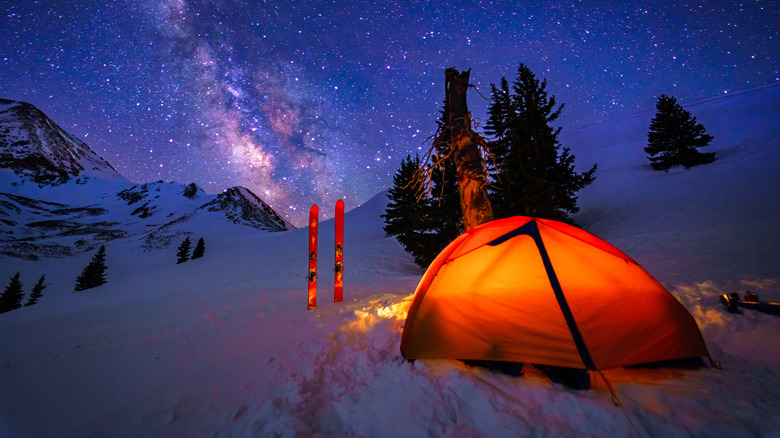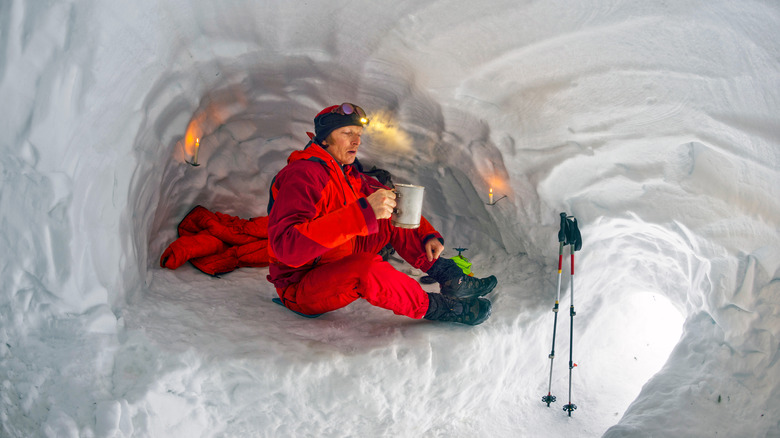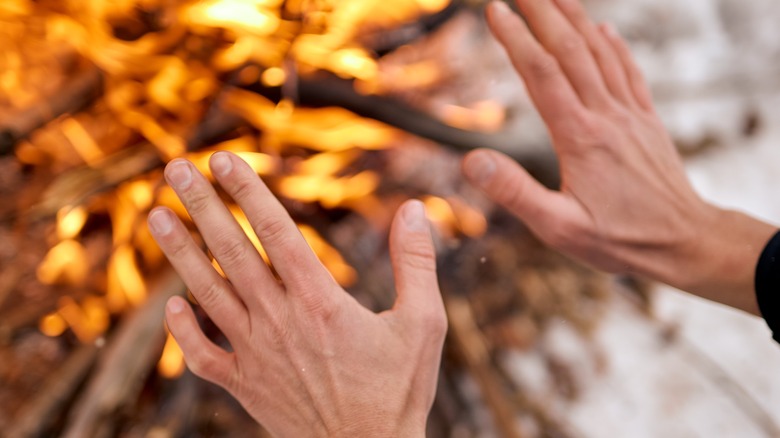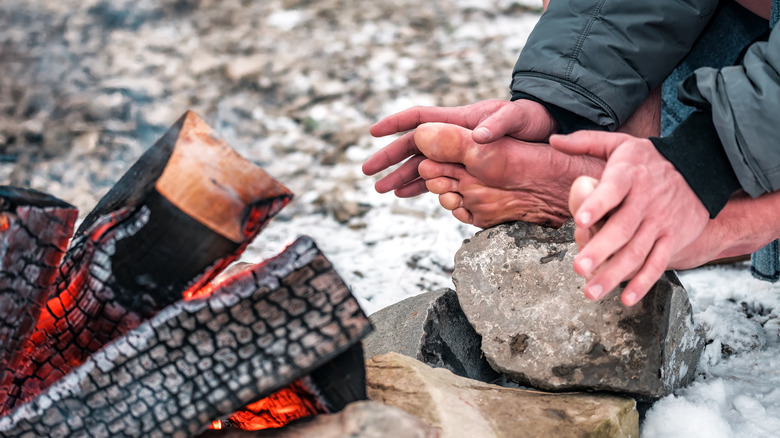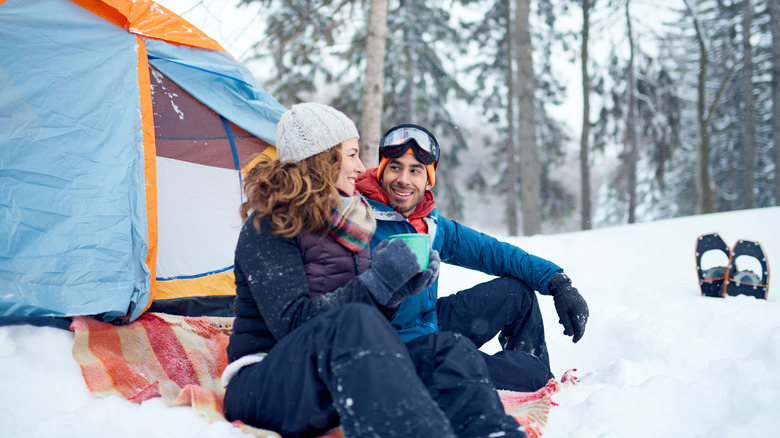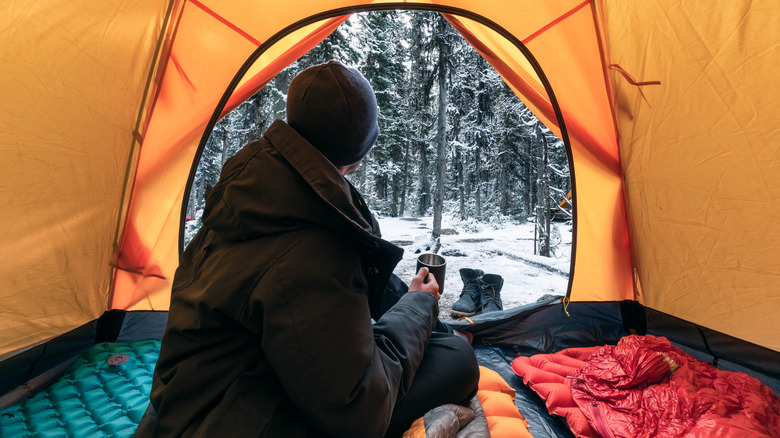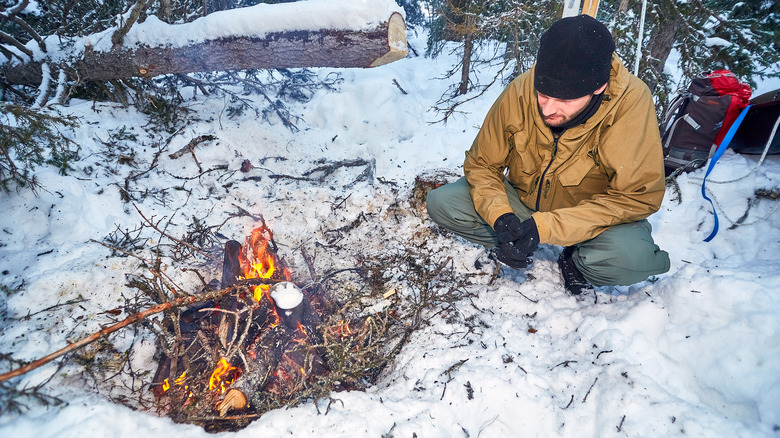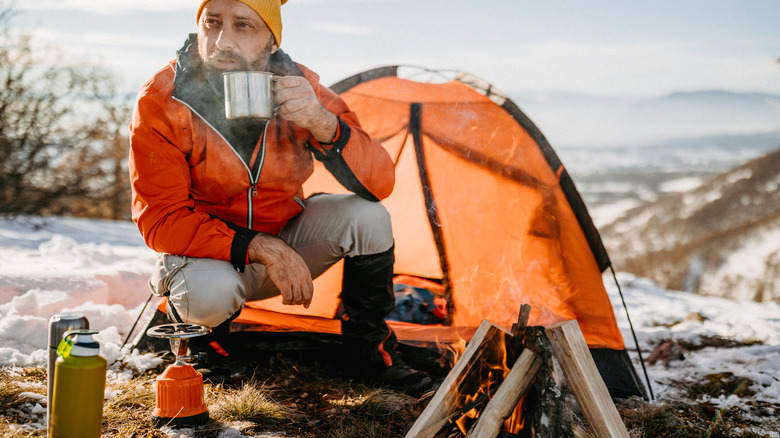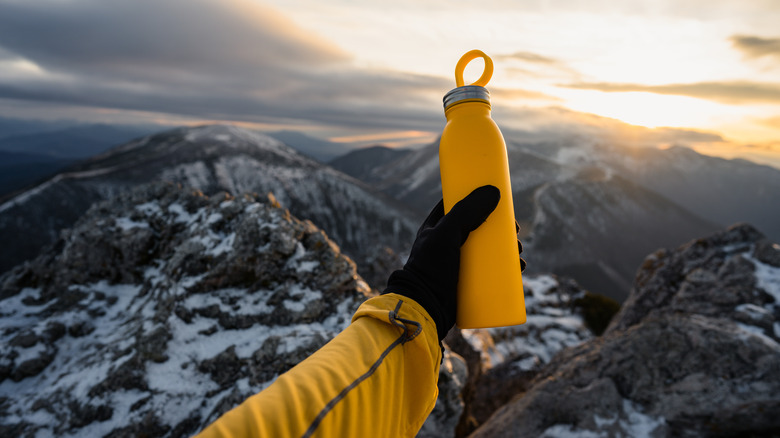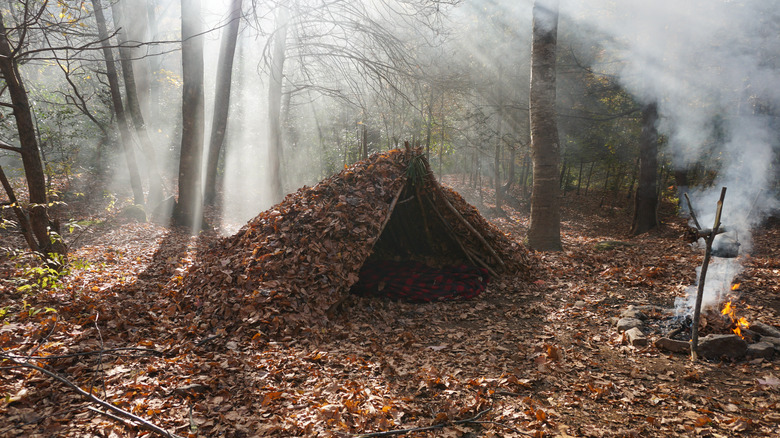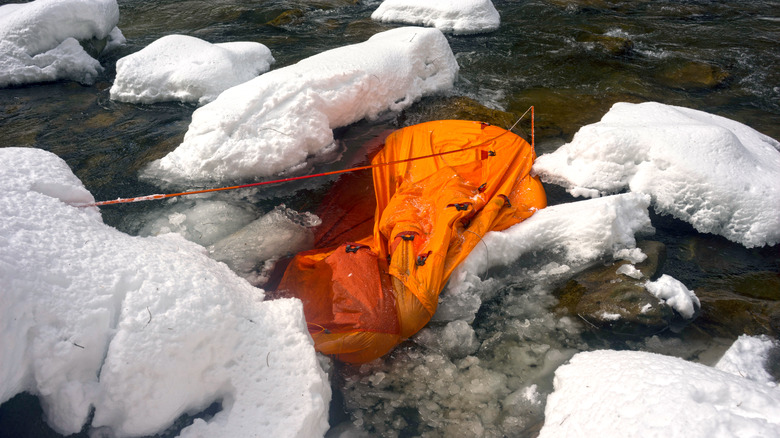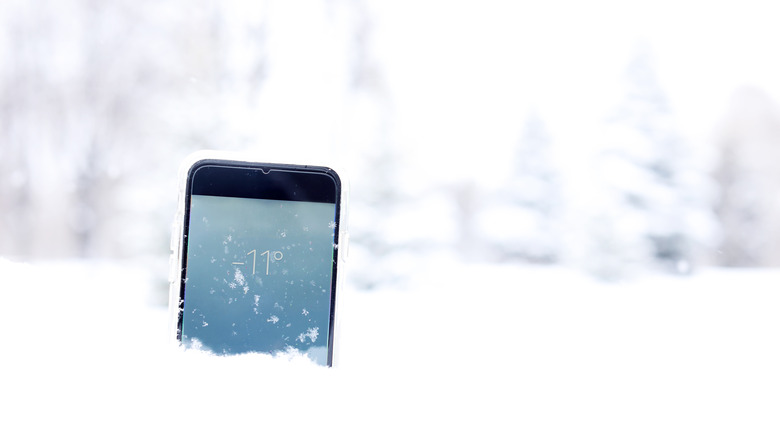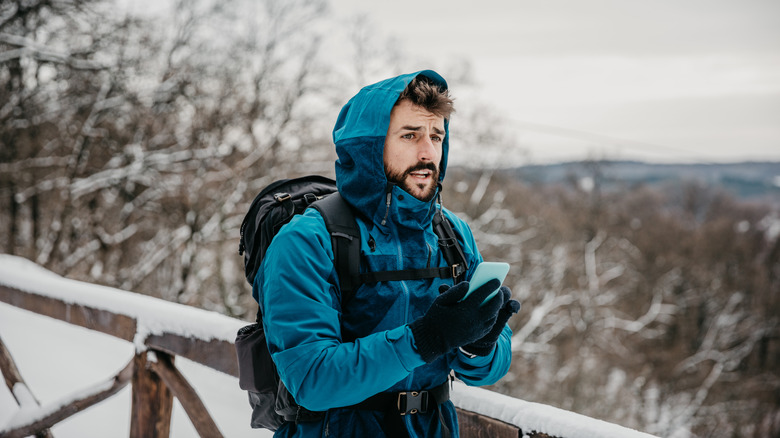What To Do If You Get Trapped In A Snow Storm While Camping
There are people out there who love going camping in the wintertime. They set themselves up with a whole assortment of different, sometimes high-tech, gear to keep their tents from collapsing and to keep themselves warm. Yet, not all campers are going to have these resources at their disposal. Indeed, instead of intentionally going out into the frigid temperatures of winter, most campers prefer to keep their trips to the summer or fall. Even then, however, depending on where you are camping, you could get trapped in that most classic of winter weather occurrences: a snowstorm.
The key to figuring out what to do when trapped in a snowstorm while camping is to have a basic understanding of how to act in an emergency. This means knowing how to take care of your body, understanding your environment, and knowing what could mean the difference between being frozen and being warm. Snow is both your ally and your enemy in this case, and we're here to give you a rundown of things you can do to make it through the ordeal.
From learning how to build a fire in a blizzard and digging out a snow cave to what to eat and how urine can be your best friend, this list of tips on what to do if you get trapped in a snowstorm while camping will give you the information you need to weather out the storm.
Build a snow cave
First and foremost, you need to be thinking about shelter. Depending on the severity of the storm in question, your tent might not be up for the task of keeping you protected. Obviously, if you're trailer camping, this shouldn't be an issue, but if you're caught in a blizzard of snow heavy enough to get your tent caved in in a matter of minutes, you need to think of another option. This is where knowing how to build a snow cave comes in.
A snow cave is a cocoon built as a means to insulate yourself from the falling snow and howling wind. It is one of the best and fastest shelters you can build. According to Gear Patrol, you need to find an area where snow depth and consistency are best. You want packing snow that can yield a strong structure. Dig the cave into a bell shape for structural support by digging upwards and then leveling off. The upward curve creates a heat trap and prevents cold air from coming into your shelter.
Make sure that the entrance to the cave does not become too blocked up with snow. You need that open to allow airflow. All told, once the storm passes, you will have been able to keep yourself safe and relatively warm from the elements outside. It's not ideal, but it could save your life.
Build a fire
Fire is, without a doubt, the best way to keep warm while you're sheltering from a storm. While you can't really keep one lit inside of your snow cave, you can light fires in other shelters such as tree pits or lean-to's. It is going to be tricky to get a fire lit in a snowstorm, but it is not impossible. Anyone who goes camping regularly is going to have tools with which to light fires, such as flint and steel. Matches are practically useless in blizzard conditions. Good, dry tinder is also necessary.
The next key is looking for the right kind of wood. Dig around in the snow for the dead wood or that which has been propped up and not buried. You can also peel back bark layers with a knife to get to the dry wood inside. The drier the wood, the better it will burn. Once you've gathered what you need, dig right down to the earth and construct your fire.
Keep the wettest wood at the bottom, build up with the drier wood, and put the tinder on the very top. Once the tinder is lit, it will, hopefully, get the rest of the logs lit as well. Keep the fire close by, but sheltered from the elements. If you can make one inside your shelter, make sure that there is an exhaust port for the smoke. Keep the fire going throughout the night so you don't have to relight it.
Leave signs
Regardless of what the forecast says, it is always a good idea to check in at the ranger station of any campground or park before you head into the wilderness on your camping expedition. This is especially true of places in higher elevations, where the possibility of snow in the summertime is not altogether impossible. Checking in at the ranger station will let them know that you're out there. Should an emergency occur, they will have a starting point of where to find you.
It's also a good idea to leave a trail of items in your wake once the snow begins to fall and you are hunting for your area of shelter. Construct an SOS sign out of rocks or branches. Tie a bright red bandana or other article of clothing to a branch. Build a smokey fire. All of these are ways to leave signs to make it easier for any rescue team to find you.
Another thing you want to do is stay put. As best you can, make sure that you are not changing your shelter destination. If you stay in one place, you can have a base that you know is safe and works for you. Plus, you are much easier to find if you're not moving around from one site to another.
Stay dry
This isn't as easy as it sounds, but remaining dry while sheltered is imperative. Staying dry is perhaps the single most important thing you can do in a snow-related emergency besides finding shelter. Moisture is your enemy. Its presence will decrease your body temperature, which, if you are trapped in subzero temperatures, could be fatal.
Wetness, whether that's caused by snow soaking your clothes or sweat from exertion, can cause the body to lose up to 85% of its heat, per Backpacker. This is why fire is so important, but it is also why you should always be prepared with an extra set of clothes when you go out camping. Regardless of the weather, it is always recommended to have dry, comfortable clothes to change into after you get wet. In a snowstorm, it could literally save your life.
Surprisingly, snow can be your ally here. You can actually use it to dry yourself off. This needs to be done extremely quickly so as not to allow hypothermia to set in. The snow will absorb the excess moisture, drying you off quickly and allowing you to get dressed into warmer clothes without much issue. It's also important that other equipment, such as sleeping bags, socks, and shoes, stay as dry as possible too.
Buddy up
Camping can be a solo affair, but, more often than not, it is done between a group of friends or a family. And while there will certainly be enough stress to go around for anyone who gets trapped in the snow, especially a family with young kids, the numbers will actually be to everyone's advantage. It is much harder to stay warm when you're on your own, but we'll get to that momentarily. Having a group means that you've got an amazing heat source on your side: body heat.
We're not suggesting that you all tuck into the same sleeping bag, though the kids should pile in with mom and dad if that's the case. However, for a group of adults, you should all be sleeping in the same shelter. Buddying up in an emergency situation is crucial. You can keep track of one another but also share that vital body heat, as well as the heat generated by your collective breathing.
To make the most of your body heat, sandwich together in the tent so that there is as little ambient space as possible drafting up through the ground. The closer you are to one another, the easier your radiating body heat can travel amongst you. And, the less space you have open to ambient temperatures, the less likely it will be that any cold is making its way inside the tent.
Keeping warm, solo
Staying warm can get tricky when you're by yourself. Of course, your own body heat is going to keep you warm, but that is only if you have sufficient layers with which to insulate yourself. Your body heat isn't going to do you much good unless something is insulating it. That being said, layering is undoubtedly the best way to stay warm during a winter storm, especially when you're sleeping. However, there is another way that is almost equally effective.
Exercise is a fantastic way to keep warm in the midst of the storm. This is especially true if you are unprepared and don't have the best layers. Body movement will literally get your blood pumping and provide you with the circulation necessary to keep yourself warm. You want to exercise just enough to keep that circulation going but not so much that you begin to sweat. Remember, moisture is the enemy here.
If you are in the habit of getting up and moving at least once or twice an hour, it is going to go a lot farther towards keeping you warm than if you do nothing at all. And while it is still vitally important to have emergency layers and blankets with you at all times, keeping warm by exercise is going to do a lot towards keeping you from freezing. Just don't exert too much because the stress from exertion and cold could actually cause heart attacks.
Melt snow to make water
Remember when you were so excited to eat fresh snow as a kid? You paid little to no mind that it was actually decreasing your body temperature because you were too busy playing to notice. Well, now that you're older and stuck in this snowstorm, you have to be thinking that, as a way of preserving your water supplies, it would be best just to eat the snow around you. This is a mistake.
Eating snow is going to decrease your body temperature, because you are actually taking in ice. What you need to do in this snow situation is to melt the snow and turn it into drinking water. There are a few ways you could go about this.
You could put it into a water bottle and stuff it into a bag or sit on it in order to encourage the snow to melt. Far more efficient, however, is the use of a metal pot or tin cup held over a fire. The heat from the flames will radiate through the metal, causing the snow to melt almost instantly. Hold it over the fire a little longer to get the now-melted snow turned into warm water. Just as having hot cocoa after playing out in the snow warms you up, so too will warm water in your snow shelter. Dehydration is your enemy. Don't skimp on the drinking.
Make sure to eat
If you're out camping, you should have food with you. And you need to eat it in order to stay warm. Snacking every half hour or so will keep your body warm because it is constantly burning calories. While you don't want to engorge yourself, some healthy snacking is going to help keep your body temperature up, as well as keep your stomach relatively full. That is provided you are eating the right things.
You want to be eating foods that are as calorically dense as possible. Not only will these help you feel full, but they will provide those necessary calories that are going to help keep your body warm. Think of things like cheese, granola, chocolate, jerky, and nuts. If you've got pouches of soup, these are also excellent, provided you've built a fire or have a camp stove to heat them up.
While you will certainly want to ration your food, seeing as you don't know how long you're going to be trapped, you don't want to skimp too much. Those calories are going to provide you with the energy you need to keep your shelter stable, dig, and build fire. The less you eat, the more likely it is that you will end up freezing.
Pee is your friend
If you thought we were joking earlier when we said that urine would be your friend in a snowstorm, we were not. Though it may seem gross, you cannot discount the fact that your pee is going to help save your life in certain situations. Apart from being sterile and drinkable when boiled, the temperature of urine is also going to be a great asset when it comes to lasting out the storm.
The last thing you want to be doing when surviving a snowstorm is to be holding in your pee. Your body is going to be putting in extra work to maintain the temperature of your urine, which needs to be warm in order to exit your body. The longer you hold it in, the more your body works to keep it warm, the colder you get, and the likelihood of a urinary infection increases. It is far better to relieve yourself than to hold it in.
When you do go, pee into a spare water bottle and screw the lid on tight. Hold onto it as a way to keep your hands warm, or keep it in your sleeping bag with you as an extra means of heat. You will get over your squeamishness pretty quickly when you realize just how much this is helping to keep you warm. When you're stuck in a snowstorm, pee is your friend.
Use nature to your advantage
Though nature is often a double-edged sword, you can use it to your advantage in certain situations. Nowhere is this double-edged metaphor more true than during a snowstorm. Nature is literally battering you with freezing temperatures and driving snow. And yet, if you know where to look, nature is also going to be your guide for surviving what it's throwing at you.
The snow cave from earlier is a perfect example. The stuff that got you into this mess is also the stuff that could protect you. The same is true with turning snow into water. Think about the branches you've used to build your lean-to or the ones you're burning to keep yourself warm. Think of the rocks you've used as a wind barrier or the hillock you've nested behind to keep the wind from destroying your shelter. Think of the river flowing nearby.
What we're saying is that when you know where to look, nature can serve as your survival guide. There is nothing she can throw your way that she can also not help you out of. It's a bit of a toxic relationship, but we put up with it.
Try to avoid certain locations
Though your mind will no doubt be swirling when you're searching for a place to build a camp, there are a few places that you need to know that just aren't suitable for constructing your shelter. You don't want to be camping under slopes, in valleys, on excess vegetation, or under damaged trees. All of these present opportunities for snow to create dangerous situations, whether that's causing a small avalanche that buries you or breaking branches that fall on you.
You want to be looking for someplace that is going to keep you protected from the wind and prevent excess snow build-up. Setting yourself up behind a boulder, clump of trees, or a hill will help keep the windchill to a minimum, as they all provide an excellent windbreak. It's also important to consider where the sun is going to come up in the morning. If you've got a compass, try facing your shelter southeastward, as you'll get the best of the morning sun, which will warm you and melt the snow.
Also, look for a place near moving water, if you can. In the eventuality you need water, being able to get some that's not frozen is going to be easier than trying to melt the snow. All told, even if your options are limited, you can still find a safe place to shelter during the storm.
Protect your electronics
Though camping is usually intended as an escape from the technology and stress of the modern world, you've still, no doubt, brought your cell phone, a walkie-talkie, or travel GPS with you on your trip. If you have, they are going to be a great resource for you when you're trapped in the snow. But only if you prioritize their battery life by keeping them warm.
The battery life of your electronics decreases dramatically the colder the temperatures get outside. This is because most batteries are powered by electrochemical reactions. The colder the chemicals are, the slower they move, and therefore, the battery life is decreased. You want to make sure that you are doing what you can to keep these electronics from freezing.
This could mean that they live in your pockets or that you sleep with them in your sleeping bag and allow your body temperature to warm the batteries. You'll no doubt be thanking yourself when you need the signal on your GPS or phone to help give coordinates to your contacted help.
Don't panic
We're not being insincere when we say don't panic. We're also not unmindful of the fact that becoming trapped in a snowstorm is a stressful affair. However, you do need to do your best to stay calm and not panic. When you are anxious, you reduce your ability to make the kind of life-saving decisions that you need to make in order to last through the storm. Choosing a shelter location, building shelter, making fire, and keeping warm are all ten times more difficult to do when you're anxious and panicking.
Panic can also affect your fine motor skills too. Shaking hands, difficulty breathing, weakness, dizziness, chest pains, and increased heart rate are not going to do you any favors. The key is to take deep, calming breaths and walk through your survival one step at a time. One step further towards creating shelter is one step closer to being protected. The more you put yourself into action and focus on what you need to do, the less likely panic is going to attack you. This is easier said than done, but it is also a necessary part of survival.
Though getting trapped in a snowstorm is a lot different outdoors than it is inside a warm ski chalet, not all hope is lost. If you follow even one of these tips for making it through, your chances of surviving increase.
